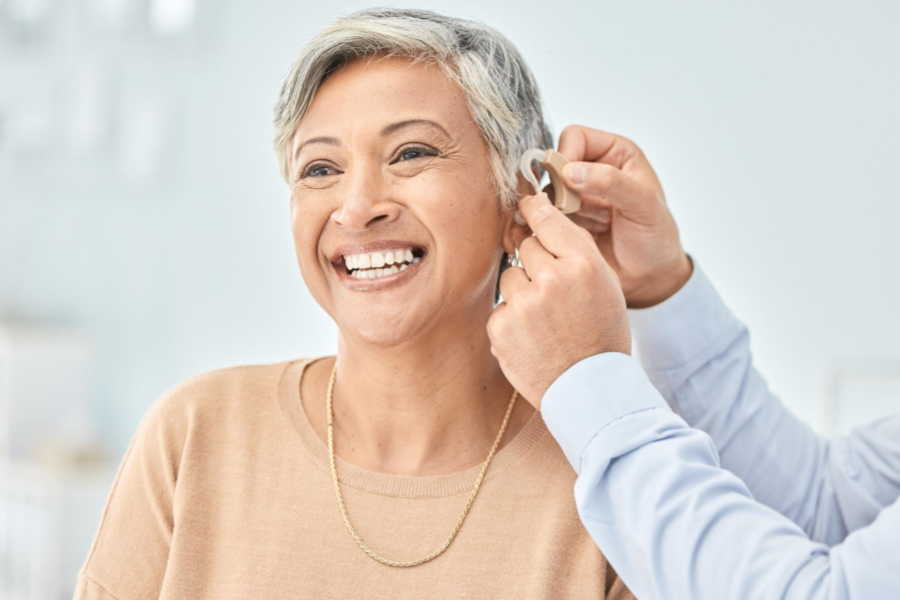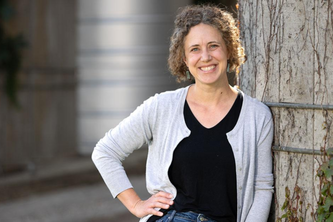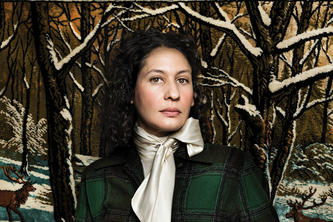
Many Minnesotans experience changes to hearing and speech as they age. One-third of adults over 65 have hearing loss that significantly affects their lives.
University of Minnesota College of Liberal Arts Professor Matthew Winn, a speech, language and hearing scientist, shares insights about hearing loss and aging.
Q: How does hearing change as we age?
Prof. Winn: Most people think hearing loss is like turning the volume down, but the most common problem is sound losing clarity. Imagine a camera with a smudge on the lens — even in good lighting, the photo will be blurry. For someone with age-related hearing loss, no matter how loud the volume is, the sound will be a little blurry and they’ll have a hard time telling one sound from another.
Volume can still be part of the problem — it becomes harder to hear softer high-frequency sounds like “s” and “t”, and the crispness of high musical notes. But more importantly, it becomes harder to separate two sounds that are going on at the same time. A younger person with typical hearing can listen to one person even if five other people are talking. We start to lose the ability to separate voices as we age, and they blend together into a tangled mess.
Q: Are there options to restore hearing?
Prof. Winn: For the most common type of hearing loss, hearing aids are the best option because they are programmed in a way that reflects decades of research on how the ear works to decode sounds. They can boost the frequencies of specific types of hearing loss and also prevent sounds from becoming too loud. A hearing aid also boosts soft sounds but doesn’t amplify sounds that are already loud, which is what a typical healthy ear would do.
There are a variety of other options as well, especially for someone who only needs extra clarity for specific situations rather than all day. There are personal amplifiers and over-the-counter devices that can give you a boost.
Cochlear implants are used for more extreme situations, such as severe to profound hearing loss, where hearing aids no longer provide any benefit. Getting a cochlear implant is a more complicated procedure that involves surgery and a lot of hard work. I spend a lot of my time working with people who grew up with typical hearing and then chose to have cochlear implants after losing their hearing — these are folks who didn’t grow up in the Deaf community using sign language.
Q: How can changes in hearing or speech affect overall health?
Prof. Winn: When hearing loss makes conversation difficult, people tend to avoid places where conversations happen — especially lively and noisy environments. People with hearing loss are more likely to take sick leave, experience anxiety, need extra time to recover after work, and retire early because of the strain of listening.
Hearing loss is connected with loneliness as well, because the quick phone calls and lunch dates that keep folks connected to friends and family become so frustrating that they are avoided to escape the strain of hearing. Hearing loss is the number one risk factor for dementia, and many believe this is related to a person withdrawing from stimulating situations because their hearing difficulty becomes a frustration.
Age-related hearing loss happens very slowly, so these little changes to routines and schedules are barely noticeable. This is why many people are unaware of their hearing problems — there is not a single day when everything changes. This is why friends and family can play an important role in helping someone recognize ways their hearing can impact their willingness to enjoy all the activities they once enjoyed.
Q: Are there resources available for people who experience hearing loss as they age?
Prof. Winn: Get an evaluation by an audiologist as a part of your regular healthcare routine. An audiologist is trained to measure hearing in a variety of ways and also has the experience to guide their patients through options that might make listening easier.
You can learn a lot by chatting with someone with a similar hearing loss who knows about places to enjoy, places to avoid and resources that make listening easier. It can help to find community with meetup groups like Hearing Loss Association of America, which has a chapter in the Twin Cities.
Check out blogs and books written by people with hearing loss, which are different from material written by someone who identifies as deaf. There are consistent themes that might sound familiar, like disagreeing with your spouse over how loud the TV should be, being frustrated when someone starts talking from another room, asking someone to repeat what was said, and remaining quiet at restaurants because it’s too difficult to hear different parts of the conversation.
Q: What is your research team doing to help Minnesotans experiencing hearing loss and speech disruptions?
Prof. Winn: My lab measures effort by tracking changes in pupil dilation while listening, which is a sign that the brain is working harder. People with hearing loss often need an extra moment after they hear a sentence to piece the words together or fill in gaps they missed. By the time there is enough information to figure it out, the speaker has already moved on to the next sentence, and it can be very frustrating to try to catch up. Our research is about that situation and the factors that make it better or worse.
A larger goal of our research is to raise awareness of this issue of listening effort so that it can be better understood by other scientists, as well as the audiologists and family members who converse with individuals who have hearing loss. One day soon, the concepts of listening effort and social interaction will be the center of the conversation when we talk about hearing loss.
Matthew Winn is a professor in the U of M College of Liberal Arts. He is a speech, language and hearing scientist, and trained audiologist, focusing on speech communication and the factors that make it difficult for people with hearing loss.
About the College of Liberal Arts
For more than 150 years, the College of Liberal Arts (CLA) has played a central and enduring role in shaping lives, for the good of Minnesota and the world. CLA is the largest college in the University of Minnesota system with nearly 500 world-class faculty instructing more than 12,000 undergraduate and 1,400 graduate students. CLA is home to 31 academic departments and 20+ interdisciplinary research centers in the arts, social sciences, and humanities. Learn more at cla.umn.edu.
About “Talking...with U of M”
“Talking...with U of M” is a resource whereby University of Minnesota faculty answer questions on current and other topics of general interest. Feel free to republish this content. If you would like to schedule an interview with the faculty member or have topics you’d like the University of Minnesota to explore for future “Talking...with U of M,” please contact University Public Relations at [email protected].
- Categories:
- Health
- Health conditions




